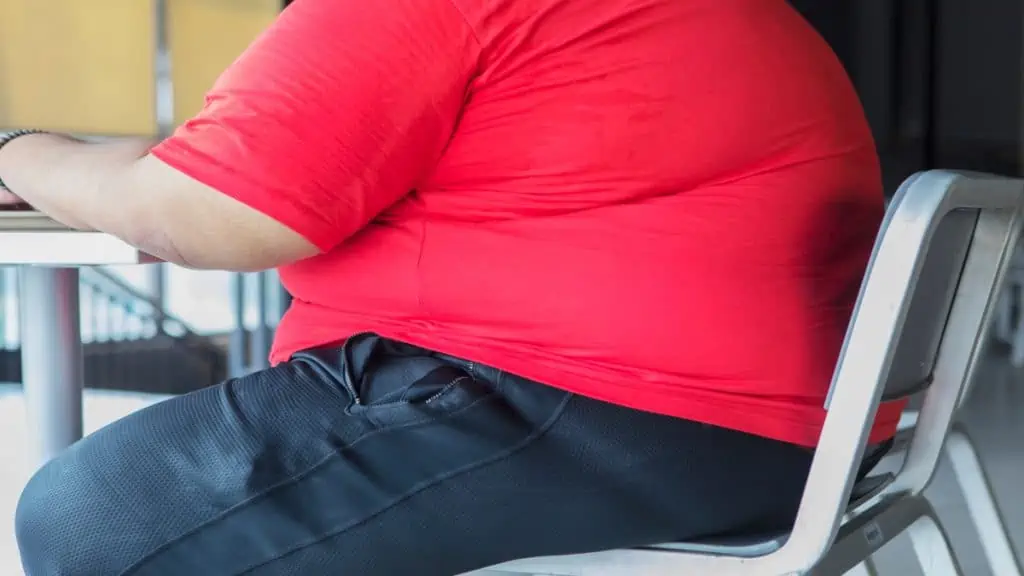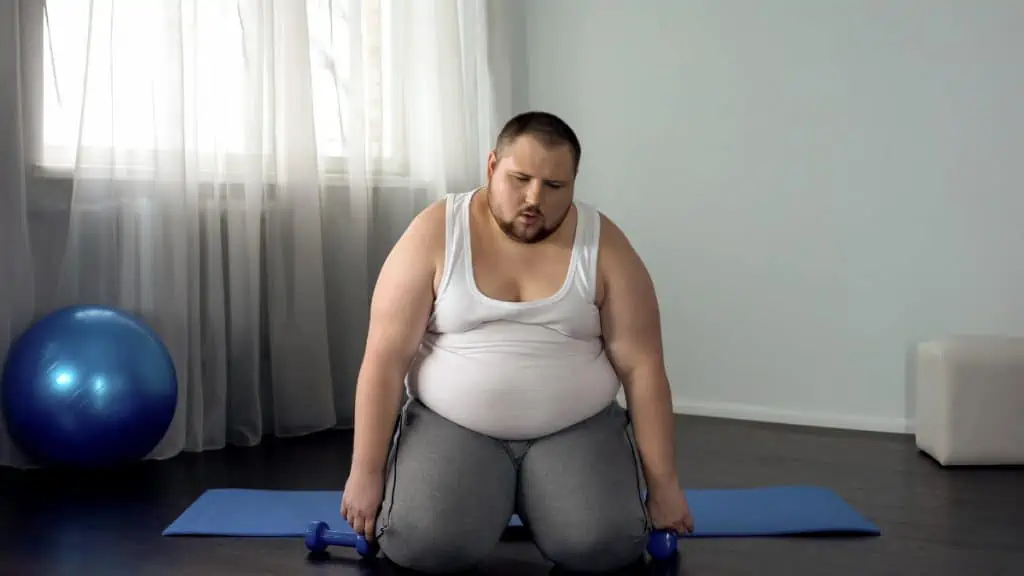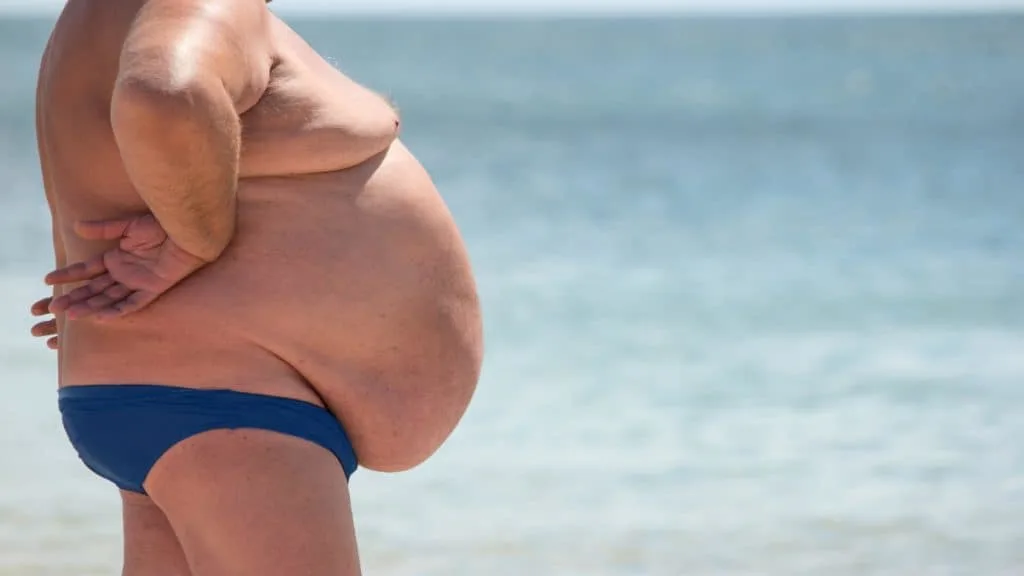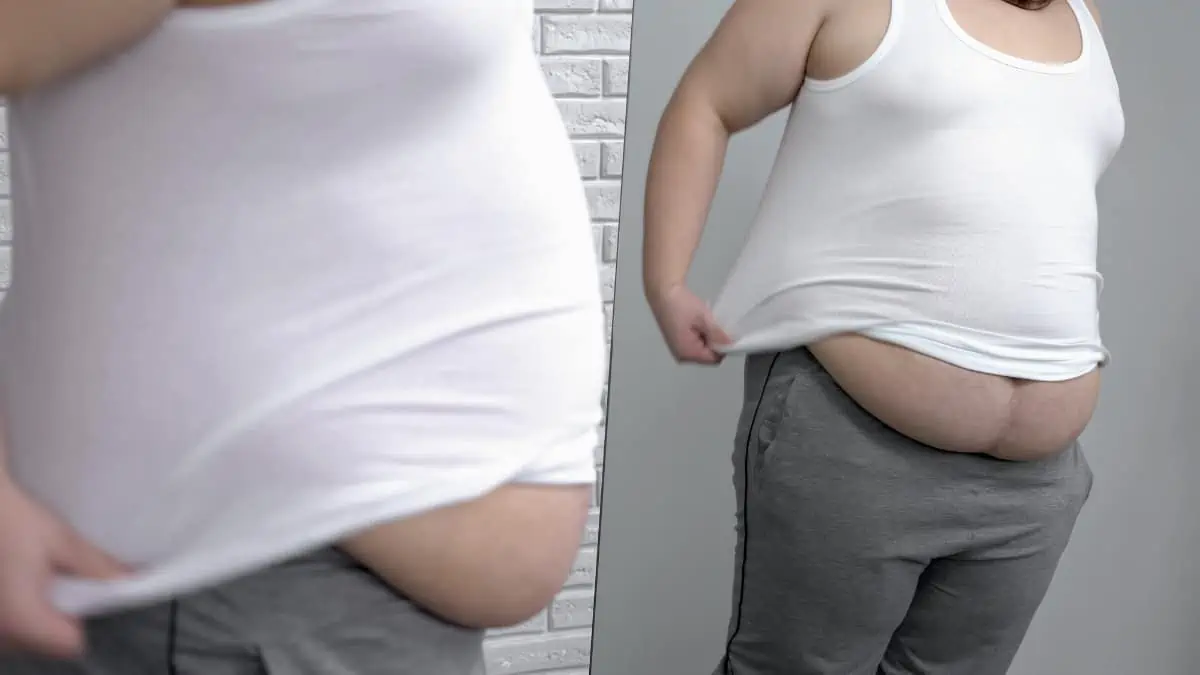An 80 inch waist is twice as big as the average American waist size, which is already too large for an individual to live in their best health.
Therefore, if you have an 80 inch waist, an 84 inch waist, an 85 inch waist, or any other similarly sized waistline, you’re putting both your short-term health and long-term health at serious risk.
But it’s not all doom and gloom. There are many examples of people out there who had massive waists and then who completely transformed their bodies. You can do the same if you’re willing to make weight loss-friendly lifestyle choices. More on those in a minute.
Why is having an 80 inch waist bad for you?

Having an 80 inch waist, an 81 inch waist, or an 82 inch waist means that you have an extremely high BMI and abdominal obesity. Both of these body states are extremely dangerous for your health because they put a lot of strain on your body, including on your vital organs.
It’s no wonder then that obese individuals have a much greater risk of diabetes, heart disease, and all-cause mortality than normal-weight individuals.
And yet, there’s hope. We’ve known for decades that exercise can help you to lose weight and also improve your health. [1]
But if you’re unable to perform challenging workouts, simply being on your feet more or going for short walks can be enough to get the weight loss ball rolling—especially when you combine the exertion with calorie restriction.
How can you lose size from your 80 inch waist?

When it comes to shedding fat, you have two variables at your disposal—your calorie intake and your energy expenditure. The goal when working out or eating less is to put your body in an energy deficit, which is a prerequisite for successful weight loss.
Very low-calorie diets, when recommended and supervised by a doctor, are excellent for losing weight quickly and getting your body weight down to a more manageable level.
Of course, if you’re used to gorging on junk food or whatever foods you like, then sticking to low-calorie diets can be challenging. Yet, they’re frequently used with success to treat and manage diseases like diabetes. [2]
On the exercise side of things, obese individuals have an especially tough time burning calories because their body size can be a genuine barrier to many forms of physical activity. This is why it’s important to do whatever you can. If you can only manage a short walk every day, then that’s a lot better than being completely sedentary.
Also, consider chair exercise. If you lack the mobility to perform conventional workouts, then lifting dumbbells while sitting down can strengthen your muscles while burning calories. You can also buy small cycling pedals that go under your feet while you’re sitting down, which is another viable option for increasing your energy expenditure without putting too much strain on your body.
What are the benefits of slimming your 80 inch waist or 85 inch waist?

If you consume a low-calorie diet and increase your activity level, then the chance of drastically slimming your 80 in waist is very high.
Yet, by performing cardiovascular activity, which will be more accessible once you lose an initial bulk of weight, you’re improving more than just your body composition.
Research shows that even when exercise doesn’t result in much weight loss, you can still see big improvements in blood pressure, waist circumference, and aerobic capacity. [3]
The same study noted that the participants also experienced an increase in mood, which is one reason why many people actually enjoy working out as much as possible—the endorphin rush and dopamine boost can be very addictive.
The verdict on losing your 80″ waist or 85″ waist

Whether you have an 80 inch waist, an 83 inch waist, or an 88 inch waist, you’ll likely be following an identical path; a low-calorie diet paired with a moderate increase in physical activity.
When you take in significantly less energy (i.e., calories) than your body needs to maintain its current weight, a decrease in body mass is the only outcome. So as long as you have the discipline to eat your doctor-recommended diet, you’ll be able to experience pleasing improvements in body composition and mobility (which will then enable you to try different types of exercise).
References
- Han, T., Richmond, P., Avenell, A., & Lean, M. (1997). Waist circumference reduction and cardiovascular benefits during weight loss in women. International Journal of Obesity, 21(2), 127–134. https://doi.org/10.1038/sj.ijo.0800377
- Diabetes UK. (2022b). Low-calorie diets. https://www.diabetes.org.uk/guide-to-diabetes/enjoy-food/eating-with-diabetes/whats-your-healthy-weight/low-calorie-diets
- King, N. A., Hopkins, M., Caudwell, P., Stubbs, R. J., & Blundell, J. E. (2009). Beneficial effects of exercise: shifting the focus from body weight to other markers of health. British Journal of Sports Medicine, 43(12), 924–927. https://doi.org/10.1136/bjsm.2009.065557

